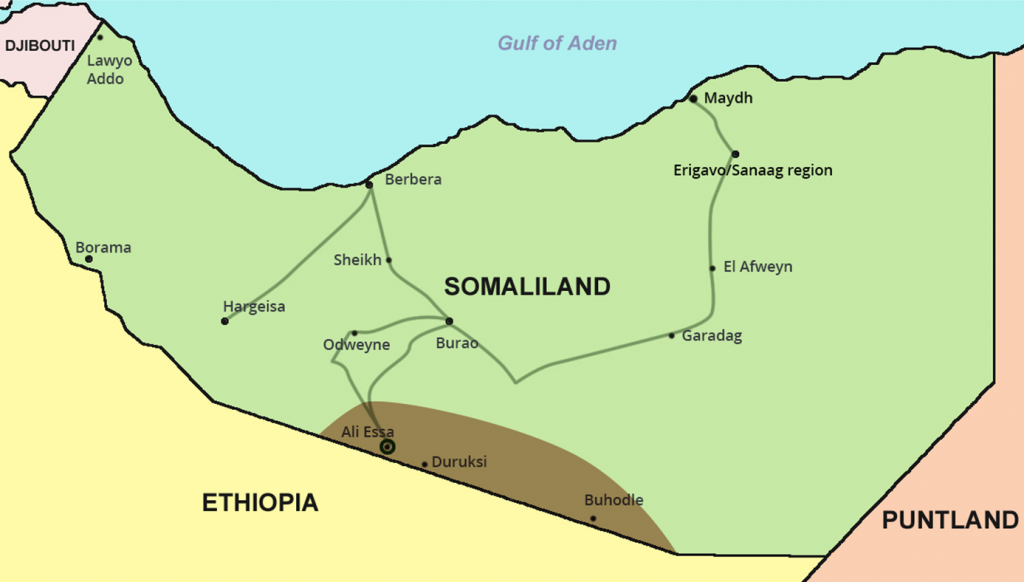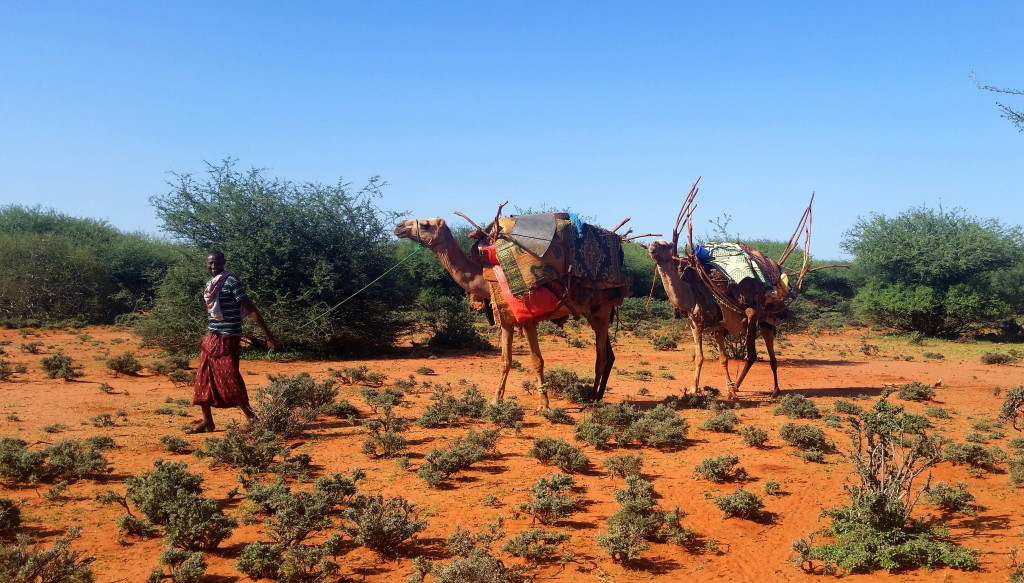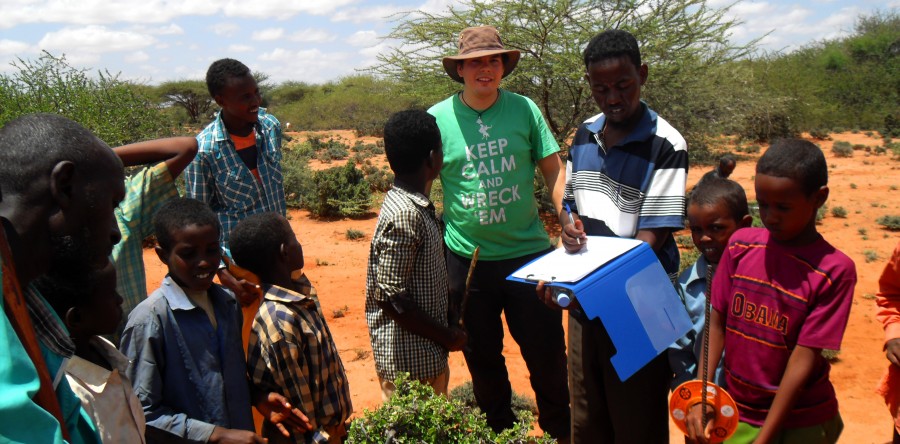In May and June 2015, three members of the project team completed a scoping mission which marked the beginning of the Yeheb Project. They travelled across Somaliland from the capital, Hargeisa, inland to the Haud Plateau that stretches for hundreds of miles on either side of the border with Ethiopia and back to the Gulf of Aden.

The mission focused on two regions: Togdheer (notably the Oodweyne district and Ali Essa habitat) and Sanaag (in its capital Erigavo). Togdheer forms a large part of the Haud Plateau and provides rangeland for pastoralists, while Sanaag on the east, presents a combination of land ecology.

The scoping mission found that Yeheb no longer grows in Somaliland and that it has vanished from the Haud rangeland north of the Ethiopian border. We have been informed that the plant exists only in selected areas in the Somali region of Ethiopia and we have managed to obtain samples in these areas, south of the border of Somaliland. This is the first study to document the disappearance of this valuable plant from large areas of its traditional range.
The most significant finding of the mission was that the disappearance of Yeheb is symptomatic of a larger problem facing the whole ecosystem of the country, namely serious land degradation due to decades of poor land management. Hence while restoring Yeheb remains a valid objective, the mission concluded that this can only be achieved by tackling the root causes of overgrazing and other pressures that have led to such serious degradation of the plant’s habitat.

The key recommendation from this mission is to build capacity in land restoration at clan and community level. Without this capacity and the support of local people, any attempt to reintroduce Yeheb will succumb to the same pressures that have largely eliminated the plant from its traditional range.

